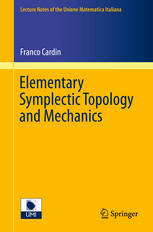

Most ebook files are in PDF format, so you can easily read them using various software such as Foxit Reader or directly on the Google Chrome browser.
Some ebook files are released by publishers in other formats such as .awz, .mobi, .epub, .fb2, etc. You may need to install specific software to read these formats on mobile/PC, such as Calibre.
Please read the tutorial at this link: https://ebookbell.com/faq
We offer FREE conversion to the popular formats you request; however, this may take some time. Therefore, right after payment, please email us, and we will try to provide the service as quickly as possible.
For some exceptional file formats or broken links (if any), please refrain from opening any disputes. Instead, email us first, and we will try to assist within a maximum of 6 hours.
EbookBell Team

5.0
60 reviewsThis is a short tract on the essentials of differential and symplectic geometry together with a basic introduction to several applications of this rich framework: analytical mechanics, the calculus of variations, conjugate points & Morse index, and other physical topics. A central feature is the systematic utilization of Lagrangian submanifolds and their Maslov-Hörmander generating functions. Following this line of thought, first introduced by Wlodemierz Tulczyjew, geometric solutions of Hamilton-Jacobi equations, Hamiltonian vector fields and canonical transformations are described by suitable Lagrangian submanifolds belonging to distinct well-defined symplectic structures. This unified point of view has been particularly fruitful in symplectic topology, which is the modern Hamiltonian environment for the calculus of variations, yielding sharp sufficient existence conditions. This line of investigation was initiated by Claude Viterbo in 1992; here, some primary consequences of this theory are exposed in Chapter 8: aspects of Poincaré's last geometric theorem and the Arnol'd conjecture are introduced. In Chapter 7 elements of the global asymptotic treatment of the highly oscillating integrals for the Schrödinger equation are discussed: as is well known, this eventually leads to the theory of Fourier Integral Operators. This short handbook is directed toward graduate students in Mathematics and Physics and to all those who desire a quick introduction to these beautiful subjects.